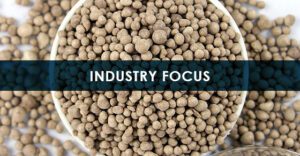Photo of the Week: Rotary Drum Liner
Our photo this week shows the interior of a rotary drum with a rubber liner installed. Flexible rubber liners are often used in rotary drums to help prevent buildup caused by material sticking to itself and the sides of the drum. Rubber liners are used …














